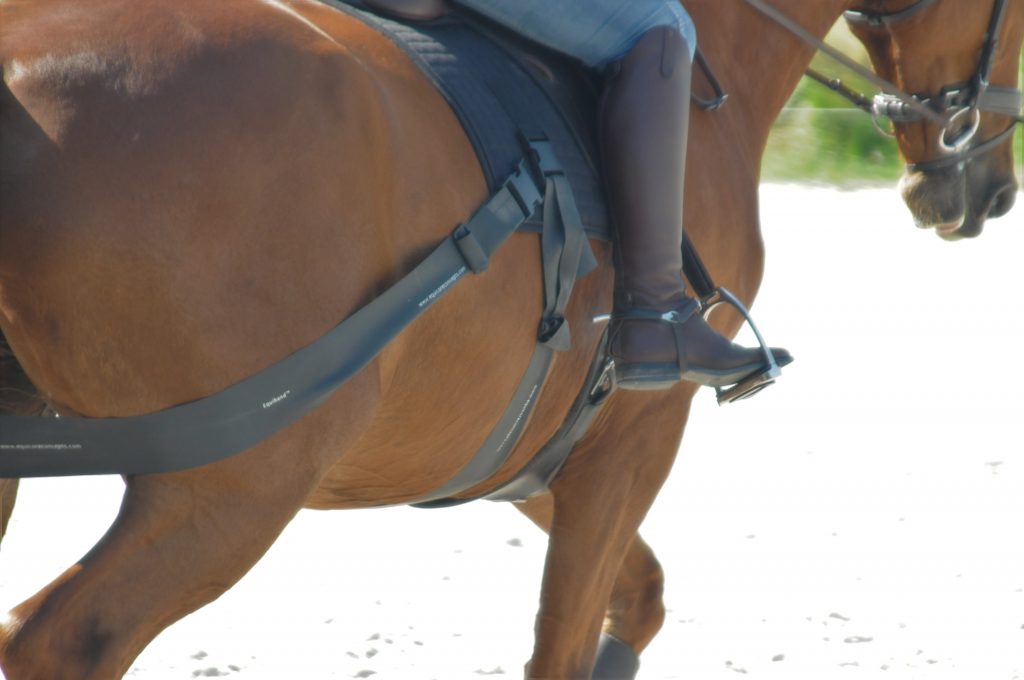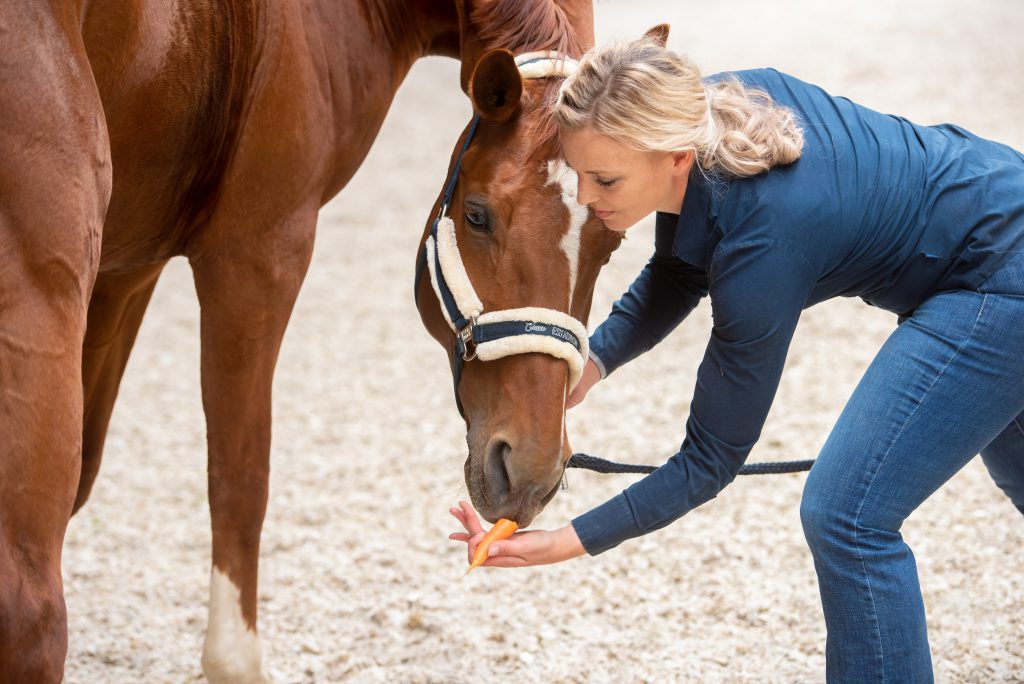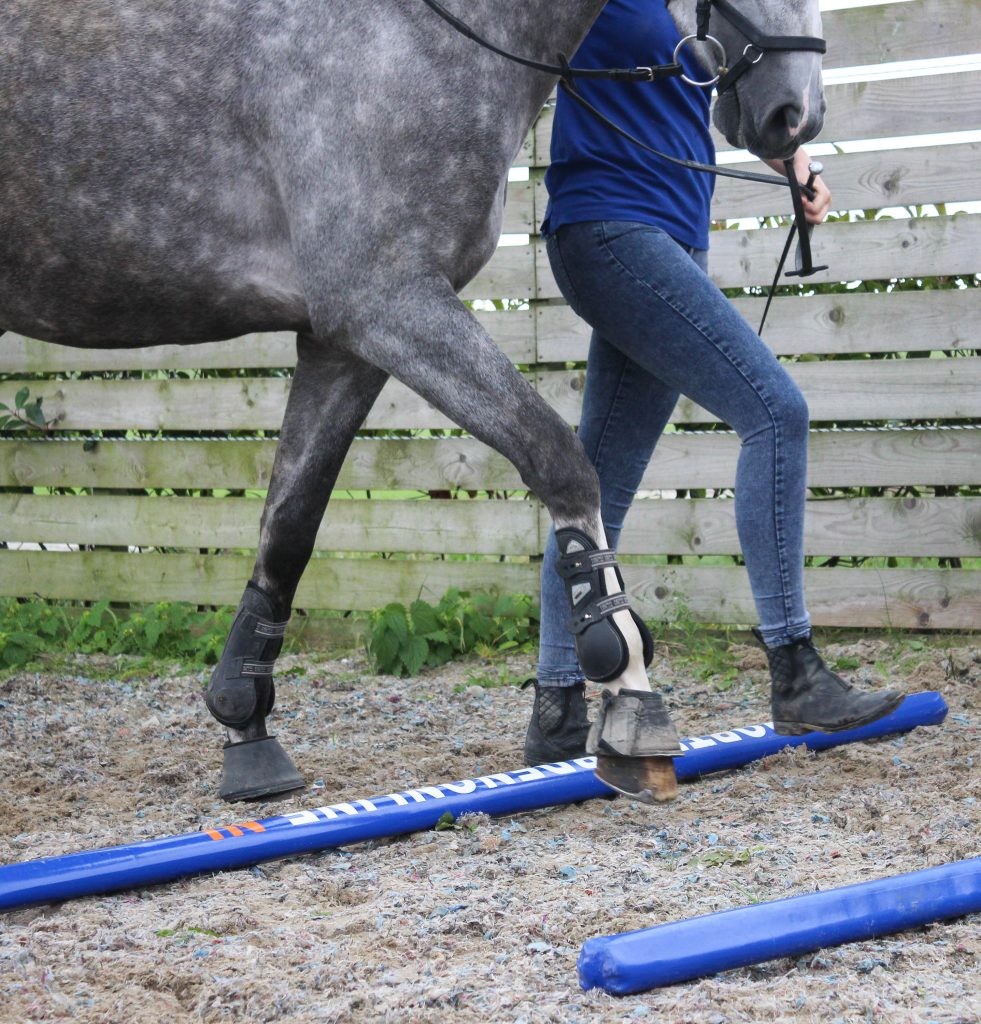Kissing spines is a feared diagnosis for a lot of owners. Some feel this is the end of their horse’s career (spoiler: it’s not). In this blog, answers to 9 of the most frequently asked questions about Kissing Spines.
1. What are Kissing Spines?
‘Kissing Spines’ is a back problem in horses where the spinous processes of two or more vertebrae touch each other. Usually, there is a little space between the spinous processes of each vertebra. In kissing spines, this space is very narrow or gone. Due to inflammation and compression at the level of the spinous processes, bony changes can develop, e.g. sclerosis (abnormal thickening of bone) and osteolysis (abnormal loss of bone). These bony changes are painful for the horse in the acute phase. The soft tissues (muscles, fascia) around the kissing spines-area can also be affected, leading to loss of function and pain.
Kissing spines are also referred to as ‘dorsal spinous process impingement’ (DSPI) or ‘overriding dorsal spines processes’ (ORDSP). The disease is also known in humans as ‘Baastrup’s sign.
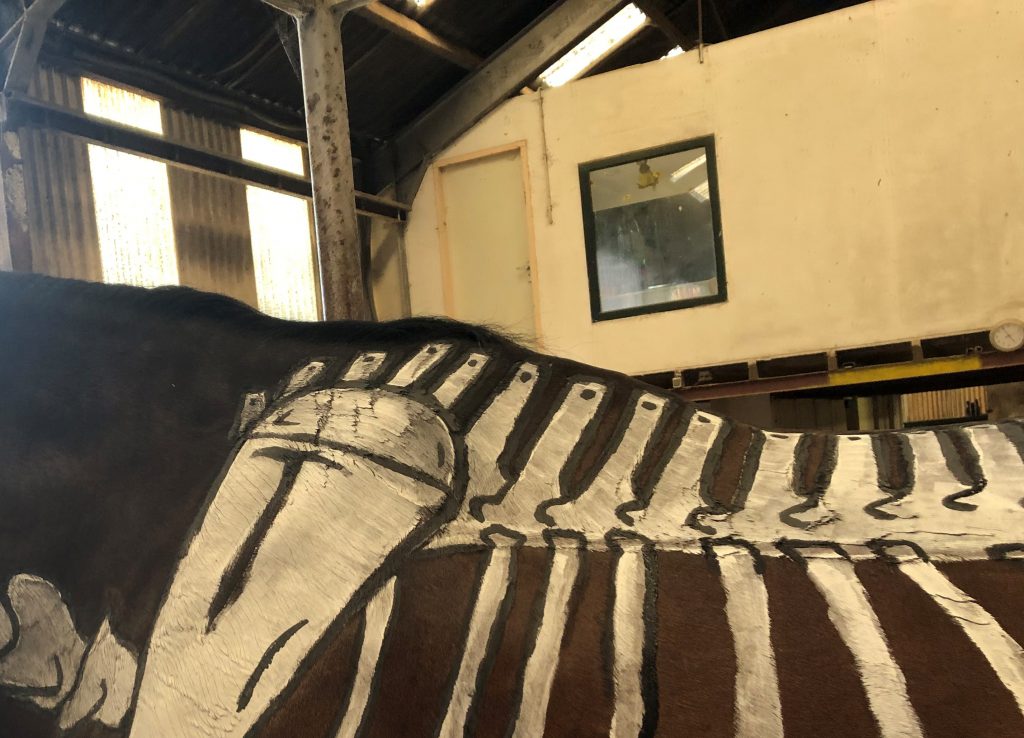
2. What are the clinical signs of a horse with kissing spines?
The clinical signs a horse shows depend on the phase of changes (acute/chronic), the amount of bony changes, the level of training, and the horse’s discipline. Due to all these factors, a horse that has severe changes on radiographs may hardly show any clinical signs (because the changes are not active anymore and the horse is trained well). On the other hand, a horse with milder radiographic changes might show severe clinical signs.
In general, horses will show signs of back pain like poor performance, problems with lateral bending and/or flexing the back, bucking, objecting to being saddled, or objecting to being mounted by a rider.
3. How can you diagnose Kissing Spines?
Kissing Spines are easily diagnosed on radiographs (X-rays). Like mentioned before, the severity of the changes in radiographic examination not always correlate to the clinical signs the horse is showing, so it is essential that the back is thoroughly examined by the vet on pain, mobility, and muscle development.
Besides radiographs, other imaging techniques can help to give more information. Scintigraphy can show the bone’s activity in the area of the kissing spines, which makes it easier to determine if the changes are more acute or more chronic.
Ultrasonographic examination can show part of the kissing spines and also shows the soft tissue in the same area. Some of the core-stability muscles (like the mm. Multifidi) show a decrease in volume on ultrasound in the area of the problem.
Due to different information with different examination techniques, your vet might want to combine them.
It can help to block the area of the kissing spines with diagnostic anesthesia to see how much the pain from the area of kissing spines is creating problems during riding. Very often, kissing spines is not the only problem in the horse, and it is important to recognize an underlying lameness or another spinal issue.
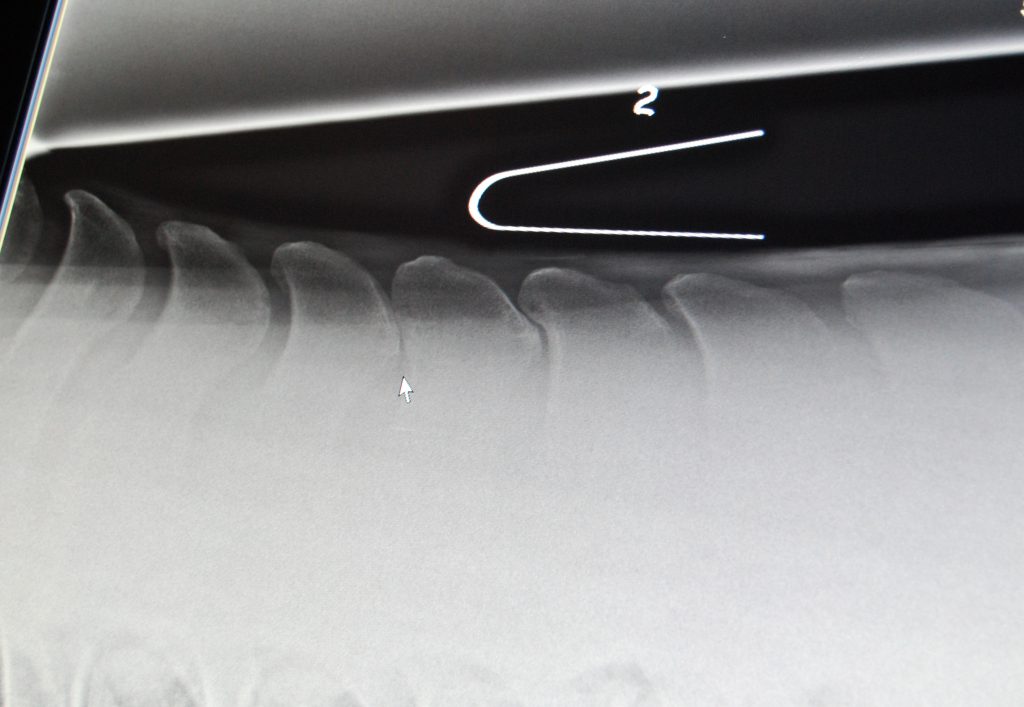
4. How can you treat Kissing Spines?
Generally speaking, kissing spines can be treated conservatively or surgically. In conservative treatment, the area of the kissing spines is injected with anti-inflammatory drugs. When osteolysis is present, the anti-inflammatory treatment is often combined with bisphosphonates. Mesotherapy (small injections in the skin) can further help to decrease soft tissue pain.
An intense rehabilitation is essential for horses with kissing spines and consists of a period of unridden work, manual therapy, and improving core stability.
Manual therapy (physiotherapy, massage, chiropractic work) is crucial to decrease pain, improve mobility, and muscle functioning. Training of the core stability muscles is important during the rehabilitation to improve the muscle volume and functioning.
When the horse is more comfortable in his back, ridden exercise can gradually be started again.
In some countries, surgical treatment is the first treatment of choice. In operation, the surgeon cuts the ligament between the spinous process, called ‘desmotomy surgery’. When the ligament is cut, there is more space between the spinous processes. The results of this surgery are very promising. However, in all of the studies performed, there was a difference in rehabilitation between the treated and control group. Therefore, it is not 100% certain if the results were derived purely from the surgery or from the differences in rehab.
5. When my horse has Kissing Spines, is his athletic career over?
No! A lot of horses function really well despite having kissing spines. There are even multiple Olympic medal-winning horses with a degree of kissing spines.
When the changes are chronic and stable, the horse will not experience any pain from the area anymore. However, problems in the management (incorrect training, poor saddle fit) can cause the horse to become painful again. Therefore, correct management and training of a horse with kissing spines are crucial.

6. Is Kissing Spines the only back problem horses can get?
No, unfortunately not. There are a lot of different causes of back problems in horses. Some examples are: facet arthrosis, SI dysfunction, myopathies (muscle problems), and spondylosis (bridge forming of the vertebrae).
Several of these problems can also be present at the same time as kissing spines. So, while your horse might show kissing spines on the radiographs, it might not be the primary cause of the back pain. Therefore it is crucial to check for other problems in the back (or an underlying lameness). Blocking the area with diagnostic anesthesia can sometimes help differentiate where the back pain is coming from.
7. How do you know Kissing Spines is causing the problem?
It is essential to have a thorough examination by your veterinarian (preferably also ridden examination) to detect the area in the back that has the most deviations, like pain, loss of muscle volume, and decreased mobility. When kissing spines are present (and the only problem) in this area, it is more likely to be the cause. Blocking the back with diagnostic anesthesia can help to determine the effect of the kissing spines on the functioning of the horse.
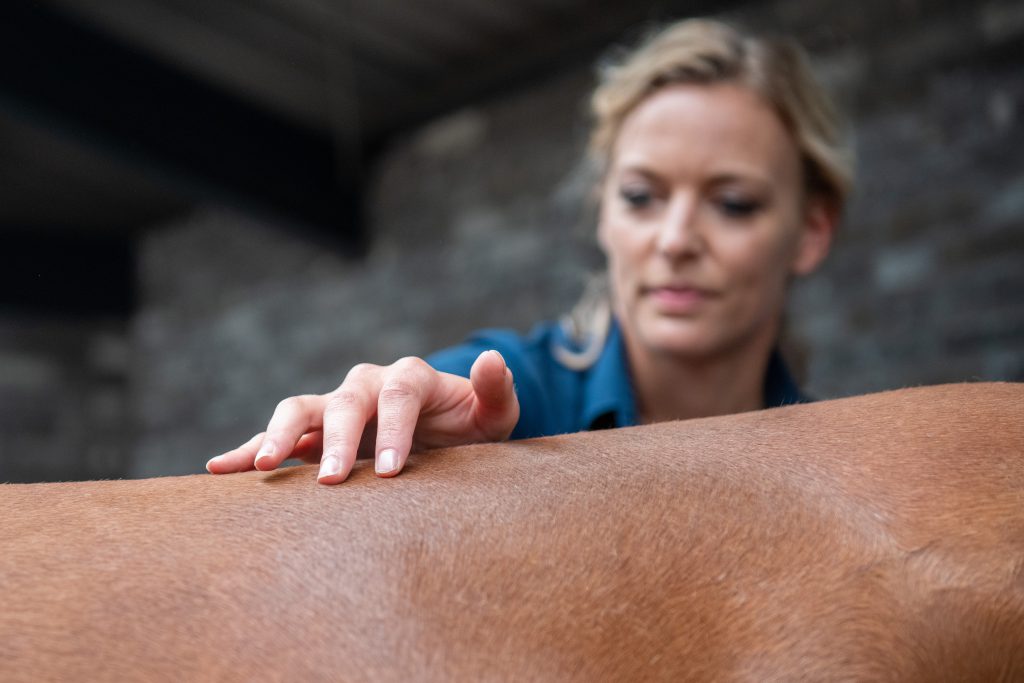
8. Is Kissing Spines a result of (bad) riding?
Kissing spines are also present in horses that have never been ridden. So kissing spines are not a result of bad riding. But, incorrect riding and poor saddle fit can increase the problem.
For example: when a horse extends his back, the spinous processes come closer to each other and have a more significant risk of touching each other. When the horse is often trained with an extended back (due to bad riding, incorrect head-neck position or poor saddle fit), this can lead to compression and inflammation in the spinous processes, leading to discomfort.
9. Are there tips for preventing Kissing Spines?
You can not change the conformation of your horse and the natural space between the spinous processes. But you can have a significant effect on the way your horse uses his back. When you prevent hyperextension of the back, you can mostly prevent kissing spines problems.
The core stability muscles are very important in the functioning of the back. Take your time to train these muscles well (preferably before you break a horse).
Some practical tips:
- Create a training schedule where you alternate between ridden and unridden exercises. Keep the focus on core stability. In ridden work, this can be done by making small transitions. A lower head-neck position can help to lengthen the topline, as long as the neck is not shortened. Remember that the walk and canter are the most mobilizing gaits for the spine.
- When unridden, you can effectively train your horse’s core muscles with groundwork, lunging, long-reining, and treadmill exercises (water treadmill or dry treadmill with incline).
- The Equiband™ is a system that can be used for core muscle activation in both ridden and unridden work.
- You can specifically train the core muscles from the ground. ‘Activate your Horse’s Core’ by Narelle Stubbs and Hilary Clayton is a book with many well-explained and effective unmounted core exercises.
- Pole-work is very useful for stretching the topline and training the core muscles. However, some horses tend to extend their back while trotting over poles. When this is the case, start with only one pole in walk and slowly build up to more poles in more gaits. Please watch out for using side-reins since a horse needs to be able to lift his head and SEE the poles. There are numerous well-explained and fun pole-exercises available online.
Author: Morgan Lashley, DVM, CERP, Equine chiropractor (FES)

